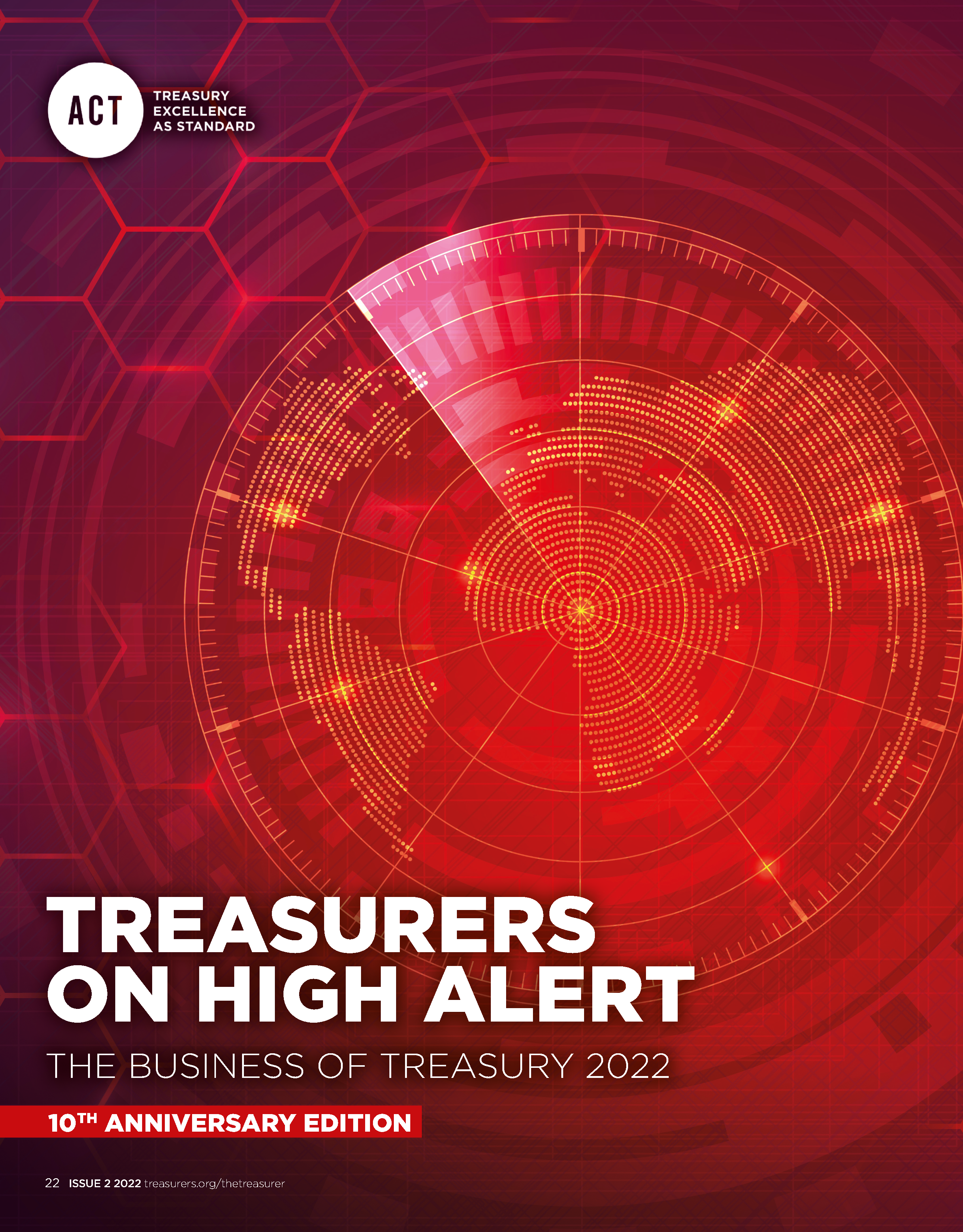The 10th annual Business of Treasury research report
Key insights
- Capital and liquidity management remains at the heart of the treasurer’s work but, as the coronavirus pandemic recedes, there is a ramp-up across other activities. All this makes the treasurer and their (generally) small treasury team busier than ever. Add geopolitical uncertainty, inflation and interest rate rises into the mix, and treasurers have to be on high alert.
- Treasury has transitioned from reactive to proactive. For the first time ever, more treasurers are defining strategy than are simply responding to requests. Board relations are stronger than ever.
- It’s becoming more difficult to recruit and retain staff, and this is likely to intensify in the short to medium term. However, it looks like hybrid working is here to stay, and this could be an important incentive for current and prospective employees.
- Business travel looks set to reduce significantly.
- Mental wellbeing remains a core focus for businesses and treasurers; indeed, it is being normalised as an issue. To a great extent, stigma has been removed.
- More experienced treasurers identify lack of leadership and strategic influencing skills as barriers to career progression; for newer entrants, skills around efficient working practices are the greatest concern.
- Financial risk management, always core to the treasurer’s role, has climbed back up the agenda particularly in the light of inflation, market volatility and, more recently, geopolitical issues. There is a generational challenge with large cohorts of treasurers (and their bankers) inexperienced in operating in conditions of rising interest rates and high levels of inflation.
The Business of Treasury provides data and findings from a survey with treasurers around the world on a wide range of issues such as board reporting, the strategic impact of treasurers, sources of funding and the importance of treasury qualifications.

